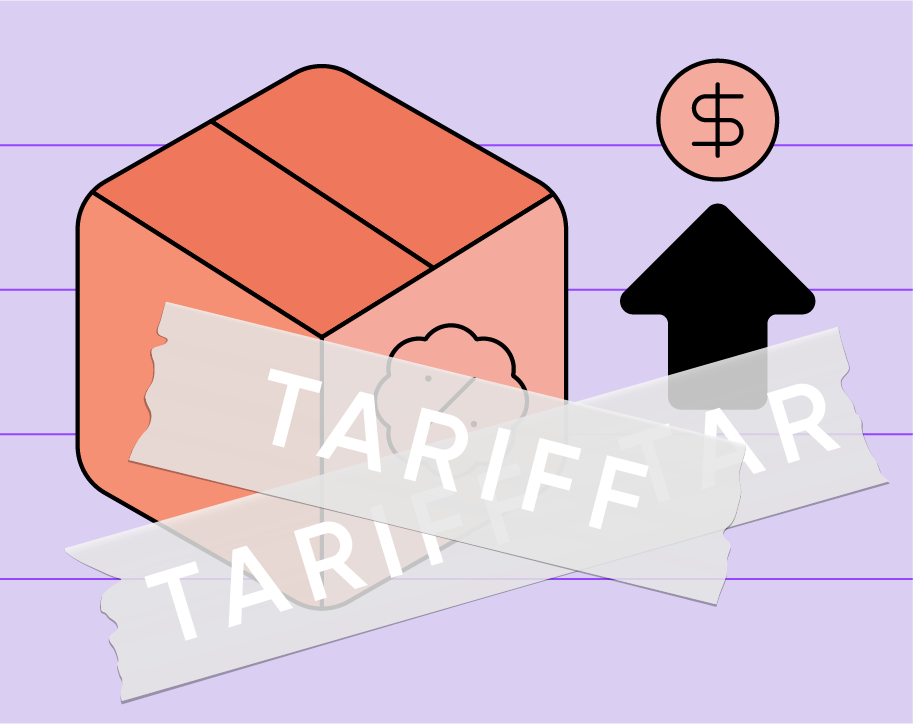How Technology is Transforming the Fashion Supply Chain
Explore how 3D design, AI, and body scanning are transforming the fashion supply chain by enhancing efficiency, cutting waste, and driving...
April 10, 2025

The global fashion industry is once again navigating uncertain terrain as new tariffs and trade regulations disrupt sourcing strategies, erode margins, and pressure timelines. With increased import duties on key apparel-producing countries like China, Vietnam, and Bangladesh, fashion brands and manufacturers are forced to rethink their operations and supply chains.
Browzwear co-founders Sharon Lim and Lena Lim find these challenges an opportunity to reset the rules and drive lasting transformation through agility, circular collaboration, and digital innovation.
"What the U.S. administration has done is set the motion to change the rules," explains Sharon Lim. The days of relying on centralized, single-region supply chains are over. While many brands diversified in response to the pandemic and previous tariffs, they now face renewed challenges as new regions also come under scrutiny. "You can't just keep running from one country to the next," says Lena Lim. "No country is immune, it seems, under this new world order."
Traditionally, long lead times and linear workflows gave brands the illusion of control. But in today's climate, slow reactions come at a steep price. Sharon points out, "Some companies are still operating beyond 12-month timelines from ideation to store drop. In the age of real-time technology, that's simply not sustainable."
What's worse, the risk of excess inventory created by rigid planning and production cycles often results in deeper markdowns than the tariffs themselves. "A 10% discount on a $100 item is more impactful to the bottom line than a 35% tariff on a $5 FOB garment," Lena explains.
The path forward, according to Sharon and Lena, is a shift from linear to circular collaboration. "Once a digital garment in 3D is available, everyone can see and act on it at the same time," says Sharon. This real-time collaboration enables faster approvals, quicker pivots, and fewer delays across the product lifecycle. "We’ve proven again and again that our platform enables first-time-right development, speeding up time to market and empowering better decisions, all while reducing waste."
Sharon also notes that companies who have invested in building trusted libraries of fit blocks are now more resilient to change. "They won’t need to start from scratch whenever there is a need for a supply chain shift," she says. "That digital foundation gives them a head start and a buffer against disruption."
As brands look to shift production in response to rising tariffs, another challenge emerges - variability in craftsmanship. Working with new suppliers in unfamiliar regions often means working with teams that may not yet have the precision or experience to develop the right garment you want from the first physical.
At the same time, sample costs and shipping costs continue to rise. That’s why achieving first time right through digital product development is no longer a luxury—it’s a necessity.
Getting the style, size, and fit right the first time reduces delays, cuts costs, and eliminates the need for multiple physical iterations that now come with higher risk and price tags. Brands need a true blueprint of a garment with real measurements. With time to market reducing, there is no time to start from scratch or rely on multiple iterations.
In this environment, agility is no longer a competitive advantage—it's a requirement. Sharon emphasizes, "Factories and suppliers with razor-thin margins cannot afford to wait. Those who adopt circular workflows and digital tools are better positioned to respond, react, and survive."
One standout example is Resonance. They completely rethought how fashion products are made. Executive Chairman Lawrence Lenihan shared in a recent Business of Fashion article that tariffs have shattered the illusion that the traditional system was working. Instead of reacting with more of the same, Resonance built a system rooted in intelligence, agility, and minimal waste.
Resonance eliminates excess inventory and unnecessary freight by using on-demand production, digital design, and a distributed network of micro-factories. Their approach proves that fashion doesn’t need to be built in bulk and hope it sells. Instead, creation can be immediate, responsive, and aligned with real customer demand.
"The most dangerous cost is the one that hides in plain sight: unsold products, overproduction, unnecessary freight, markdowns, and returns," Lawrence Lenihan wrote. Tariffs didn’t just increase the cost of doing business—they exposed the fragility of outdated processes.
Tariffs are just the latest disruption in an industry already shaped by climate change, pandemics, and shifting consumer behavior. But fashion brands that invest in agility, real-time collaboration, and digital product development won’t just weather these storms—they'll thrive.
"Every crisis proves the same thing," Sharon concludes. "A lack of reaction time always makes bad business. It’s time to stop being reactive and start building a smarter, faster, and more sustainable way of working. This is the opportunity for reinvention, as pointed out by Laurence.”
Explore how 3D design, AI, and body scanning are transforming the fashion supply chain by enhancing efficiency, cutting waste, and driving...
Streamline fashion workflows with Browzwear x Tronog: accurate fit, custom designs, and photoreal imagery, faster and at a lower cost.
Discover how Artificial Intelligence (AI) and digital product development software work together to speed up workflows and enhance creativity.